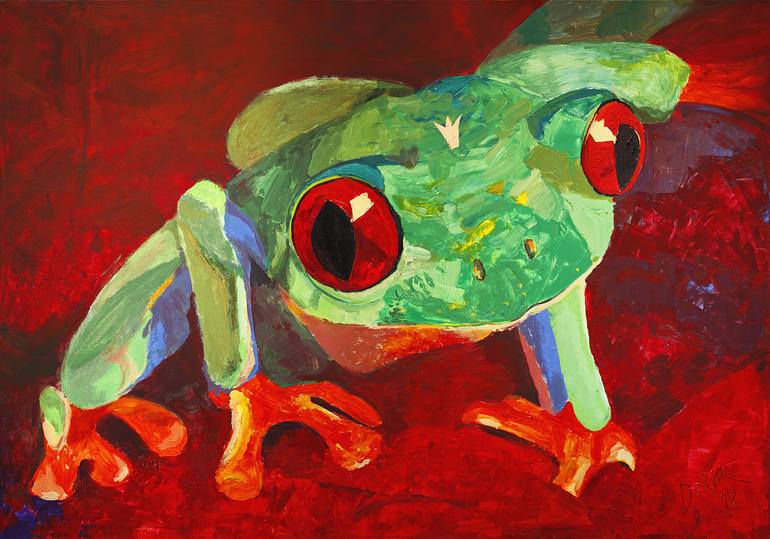





1086 Views
19
View In My Room
Painting, Acrylic on Canvas
Size: 78.7 W x 55.1 H x 2 D in
Ships in a Tube
$17,400
Shipping included
14-day satisfaction guarantee
Trustpilot Score
1086 Views
19
Artist Recognition

Artist featured in a collection
ABOUT THE ARTWORK
DETAILS AND DIMENSIONS
SHIPPING AND RETURNS
Painting from 'Wildlife' set by Daria Bagrintseva Agalychnis callidryas (red-eyed tree frog) is an arboreal hylid native to Neotropical rainforests where it ranges from Mexico, through Central America, to Colombia. It is sometimes kept in captivity. The specific name of the red-eyed tree frog, A. c...
Year Created:
2012
Subject:
Mediums:
Mediums:
Painting, Acrylic on Canvas
Rarity:
One-of-a-kind Artwork
Size:
78.7 W x 55.1 H x 2 D in
Ready to Hang:
Not Applicable
Frame:
Not Framed
Authenticity:
Certificate is Included
Packaging:
Ships Rolled in a Tube
Delivery Cost:
Shipping is included in price.
Delivery Time:
Typically 5-7 business days for domestic shipments, 10-14 business days for international shipments.
Returns:
14-day return policy. Visit our help section for more information.
Handling:
Ships rolled in a tube. Artists are responsible for packaging and adhering to Saatchi Art’s packaging guidelines.
Ships From:
United States.
Need more information?
Need more information?
Daria Bagrintseva
United States
Daria Bagrintseva is a world known contemporary artist, winner of 19 international awards in the field of art. Daria's paintings were acquired for the permanent collection of the State Russian Museum in St. Petersburg, Russia. Daria was born in Moscow and is currently based in Miami. A Master of Fine Arts, she studied in Italy, Russia, and the USA. The American magazine ‘Art Business News’ recognized Daria as one of the Top 50 Emerging Artist of the World in 2012. She is the author of the unique methodology of teaching creativity and painting for adults and children. Daria's solo exhibitions took place in more than 20 countries, and she was a Member of Art Basel Art Week in Miami 2012, 2016 and 2019. Daria has also exhibited her work as one of the selected emerging artists in the Louvre, Paris, 2011 and in the castle of Pierre Cardin on the Champs Elysees. In 2016. Her works are in private collections in Russia, USA, Germany, France, Switzerland, Italy, Spain, Norway, Denmark, Holland, Cyprus, and India. Daria has appeared in over 100 printed publications, her paintings found a home in prestigious private collections all over the world, and over 500 of her paintings have been sold.
Artist Recognition

Artist featured by Saatchi Art in a collection
Why Saatchi Art?
Thousands of
5-Star Reviews
We deliver world-class customer service to all of our art buyers.
Global Selection of Original Art
Explore an unparalleled artwork selection from around the world.
Satisfaction Guaranteed
Our 14-day satisfaction guarantee allows you to buy with confidence.
Support Emerging Artists
We pay our artists more on every sale than other galleries.
